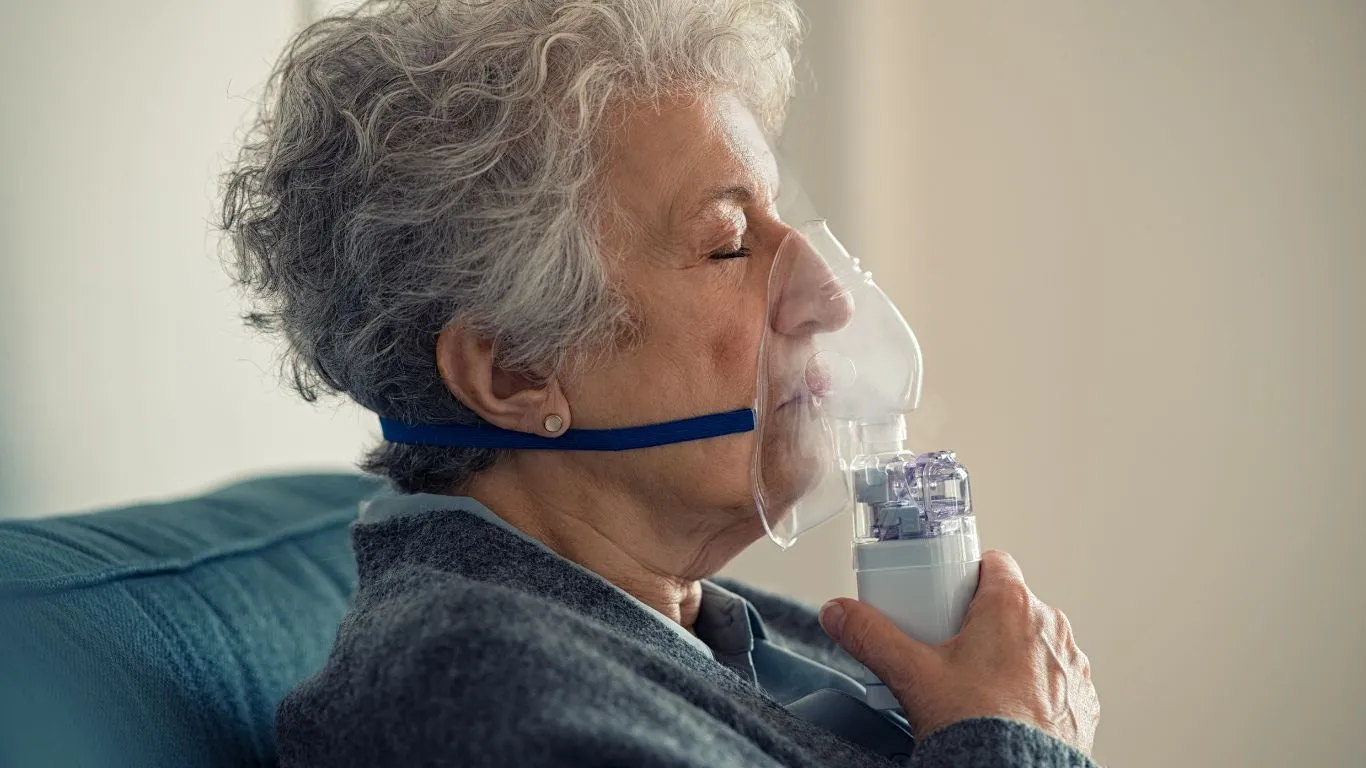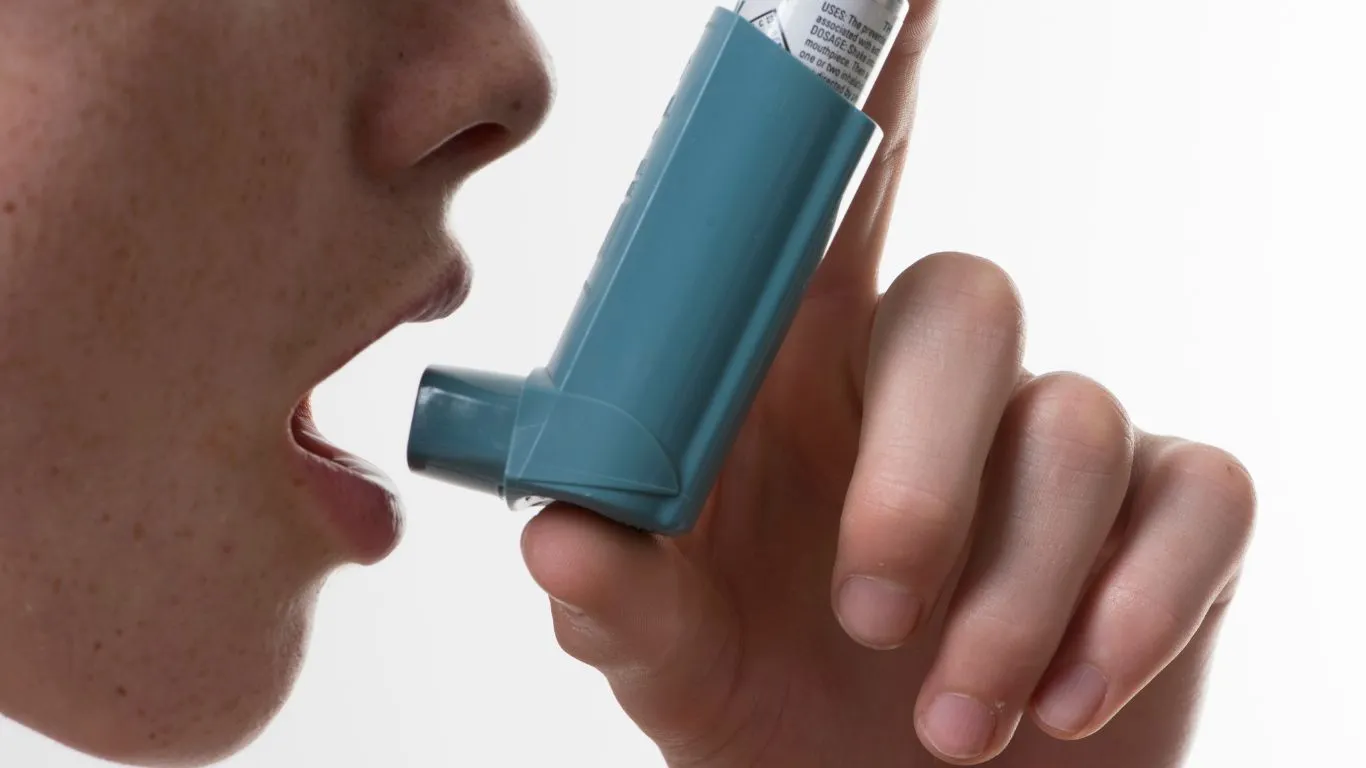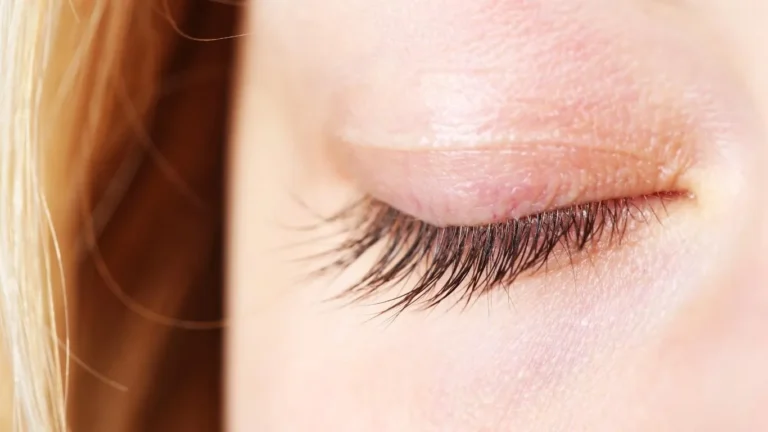Can Asthma Cause Temperature Sensitivity? Discover Proven Solutions
As someone who has spent years in the pulmonary care field, working closely with patients suffering from asthma, I’ve seen firsthand how the condition can affect people in ways that go beyond the usual breathing difficulties. One common question that often comes up is: “Can asthma cause temperature sensitivity?” It’s a concern that’s not often discussed, but in my experience, it’s something that many patients struggle with, sometimes without even realizing it. So, let’s dive into this topic, unpacking the link between asthma and temperature sensitivity, how it can impact daily life, and what you can do about it.
Understanding Asthma and Temperature Sensitivity

Before we start talking about temperature sensitivity specifically, it’s important to understand the basics of asthma. Asthma is a chronic respiratory condition that causes inflammation and narrowing of the airways in the lungs, making it harder to breathe. It can be triggered by various factors like allergens, exercise, air pollution, and even stress. However, what many people don’t realize is that environmental factors, such as temperature fluctuations, can also play a significant role in triggering asthma symptoms.
When we think of temperature sensitivity, we often associate it with people who have conditions like fibromyalgia or rheumatoid arthritis. But asthma patients are also particularly vulnerable to extreme temperatures, whether it’s cold, heat, or sudden weather changes. These shifts can stress the body’s respiratory system, making it more difficult for asthma sufferers to regulate their breathing and overall well-being.
How Cold Weather Affects Asthma

Cold air can be one of the most problematic environmental factors for people with asthma. If you’ve ever stepped outside during winter and felt that immediate tightness in your chest, you know exactly what I’m talking about. For asthma sufferers, the cold can cause the airways to constrict, which leads to wheezing, coughing, and shortness of breath. This is especially true for individuals whose asthma is triggered by respiratory irritants or allergens in the air.
The body’s response to cold air is natural. Our airways constrict to warm up the air we breathe before it reaches our lungs. But for someone with asthma, this can create a situation where their already-sensitive airways become overly restricted, triggering an asthma attack. It’s something I’ve seen time and time again in the clinic, where patients report feeling fine at first, but after a few minutes in cold air, their symptoms take a drastic turn for the worse.
How Heat Can Affect Asthma

On the flip side, extreme heat can also be a trigger. I remember many instances during summer months when patients would come in, complaining of trouble breathing during heatwaves. High temperatures can lead to dehydration, which can thicken mucus in the airways, making it harder to clear. This can cause a buildup of irritation and potentially trigger asthma symptoms.
In addition, hot weather often increases the concentration of air pollutants and allergens, like pollen and mold, which can further irritate the lungs. For someone with asthma, this is like a double whammy—combined environmental factors that stress their respiratory system, making it harder to breathe and control symptoms.
The Impact of Sudden Weather Changes
It’s not just the extremes of cold and heat that people with asthma need to worry about, though. Sudden shifts in temperature—like walking into a hot room after being outside in the cold or transitioning from an air-conditioned environment to a humid one—can also throw off the body’s temperature regulation and trigger asthma flare-ups. The abrupt change in air quality, humidity, and temperature can confuse the body, leading to spasms in the airways. This is a phenomenon I’ve seen with patients who are already on edge about managing their asthma day-to-day.
What Does This Mean for People with Asthma?
So, what does all of this mean for those of us with asthma, or for those of you who are caregivers? Temperature sensitivity isn’t just about being uncomfortable. It’s a real, impactful concern that can affect asthma control and quality of life. Understanding the connection between asthma and temperature sensitivity is the first step toward managing it more effectively. By being aware of the risks and triggers associated with temperature changes, we can take proactive steps to minimize the impact on our health.
Why Are Some Asthma Patients More Sensitive to Temperature Changes?
The degree to which temperature affects asthma symptoms varies from person to person. Some individuals are more sensitive to temperature extremes because their asthma is more severe or they have other underlying health conditions, such as allergies, that amplify the problem. Additionally, patients who experience frequent or intense asthma attacks may have airways that are already narrowed and inflamed, making them more prone to reacting to temperature changes.
From my own experience as a pulmonary nurse, I’ve noticed that asthma patients with poorly controlled symptoms tend to have a heightened sensitivity to environmental factors, including temperature. However, that doesn’t mean well-controlled asthma patients are completely immune to the effects of extreme temperatures. Everyone with asthma should be mindful of how their body responds to changing weather conditions, particularly during the colder and hotter months.
Managing Temperature Sensitivity for Asthma Patients

So, now that we know how temperature sensitivity can affect asthma symptoms, you might be wondering, “What can I do about it?” In my years of experience working with asthma patients, I’ve seen that managing temperature sensitivity involves a combination of practical tips, preventive measures, and sometimes, medication adjustments. Let’s talk about a few ways to handle the effects of temperature changes on asthma.
Layering Clothes to Keep Warm and Prevent Asthma Attacks
When the temperature dips, one of the most straightforward ways to protect yourself is by dressing in layers. Wearing multiple layers allows you to stay warm without exposing your lungs to cold air directly. I’ve often recommended to my patients that they wear scarves, turtlenecks, or neck gaiters to help warm the air before it enters the lungs. This can be especially helpful for those who struggle with cold-induced asthma symptoms. Think of it like a little barrier between your sensitive airways and the harsh winter wind.
For those of you who are asthmatic and sensitive to the cold, this can make a huge difference. A good-quality scarf can act like a filter, keeping both cold and dry air at bay. If you’re heading outdoors, especially in freezing temperatures, be sure to cover your nose and mouth with something breathable that won’t restrict your airflow, but will still provide that necessary protection.
Using a Humidifier to Fight Dry Air

Another common issue during winter months is dry indoor air. Many homes use heating systems that suck moisture from the air, creating an environment that can dry out your nasal passages and airways. This dryness can trigger asthma symptoms like coughing, wheezing, and tightness in the chest. To combat this, I highly recommend using a humidifier, especially if you live in a colder climate where indoor heating is essential. A humidifier adds moisture to the air, helping to prevent your airways from drying out and becoming irritated.
If you have asthma, having a humidifier in your bedroom or living space can make a noticeable difference. But be sure to clean it regularly to avoid mold growth, which can worsen asthma symptoms. You don’t want to swap one problem for another, right?
Staying Hydrated Is Key
This might sound like a no-brainer, but staying hydrated is often overlooked when it comes to managing asthma, especially in hotter months. Dehydration can thicken mucus in your airways, making it harder to breathe. And that’s the last thing any asthma patient needs! Whether it’s hot or cold weather, drinking plenty of water is a simple yet effective way to manage your asthma and temperature sensitivity.
During hot weather, the risk of dehydration increases because the body loses more fluid through sweat. For those who have asthma, this means their mucus can become thicker and harder to clear, making it more difficult to breathe. If you’re outside for long periods, especially in heat, take regular water breaks and make sure you’re replenishing lost fluids. And don’t forget about electrolyte balance—sometimes it’s not just about water, but also about maintaining the right level of salt and potassium, which helps keep you hydrated effectively.
When to Seek Medical Help: Recognizing Severe Symptoms

Even with all the preventive measures, there may still be times when asthma symptoms flare up, despite your best efforts. It’s crucial to recognize when these symptoms are more than just a little inconvenience and when they’re signaling a more severe problem that requires medical attention.
If you notice that your breathing becomes significantly labored after exposure to temperature changes, or if your symptoms (like wheezing, coughing, or shortness of breath) persist despite using your rescue inhaler, it’s time to seek help. Asthma attacks can be life-threatening, and waiting too long to address them can make them harder to control. I’ve seen many cases where patients tried to “wait it out,” only to end up in the emergency room because they didn’t act fast enough.
What to Do if You Experience a Severe Asthma Attack
If you’re experiencing a severe asthma attack, there are a few steps you should take immediately:
- Use your rescue inhaler: If you haven’t already, use your prescribed quick-relief inhaler right away. Follow the instructions on how many puffs to take and wait a few minutes to see if symptoms improve.
- Find a calm, cool place: Try to get to an area where the temperature is more stable, not too hot or cold. If you’re outside, move indoors or into a car where you can control the environment.
- Call for help: If your symptoms are not improving or worsening, don’t hesitate to call 911 or visit the nearest emergency room. Always err on the side of caution.
It’s also important to remember that asthma doesn’t look the same for everyone. Some people may have more subtle symptoms that develop slowly, while others may experience sudden, acute attacks. That’s why it’s so important to stay vigilant and always have your medication and a plan in place for handling asthma attacks.
Work with Your Doctor to Adjust Your Asthma Management Plan
If you find that temperature sensitivity is becoming a recurring problem, it may be time to check in with your doctor. Asthma management plans can always be adjusted based on your specific triggers. In some cases, your doctor may recommend a change in medication, such as increasing the dose of your inhalers or adding a different type of medication to prevent inflammation in the airways.
As a pulmonary nurse, I’ve seen patients who were able to better control their asthma just by fine-tuning their treatment plan and making small changes to how they approach their environment. For instance, some patients benefit from using a daily controller inhaler in addition to their rescue inhaler, especially during seasons where temperature sensitivity is most prominent.
Tips for Reducing Temperature Sensitivity in Asthma Patients

Now that we’ve discussed the impact of temperature on asthma and how to manage the symptoms, let’s talk about some additional strategies you can use to reduce temperature sensitivity overall. These tips are not just about controlling asthma in extreme weather but also about creating a lifestyle that minimizes triggers and makes your day-to-day asthma management more manageable. After all, no one wants to be constantly battling temperature-related asthma flare-ups!
1. Stay Informed About Weather Changes
It may sound simple, but staying up to date on the weather forecast can make a world of difference for asthma patients. For instance, if you know that a cold front is moving in or that a heatwave is expected, you can plan your outdoor activities accordingly. Personally, I’ve seen many patients who only discover that weather changes affect their asthma symptoms after they’ve had a rough day outdoors without any preparation. By checking the weather in advance, you can take the necessary steps to avoid exposure during peak problem times, like early mornings or late evenings when the temperature shift is most noticeable.
For example, if the weather report says that temperatures are dropping dramatically, you can make sure to wear layers and a scarf before heading out. Alternatively, if you know there’s going to be high humidity or extreme heat, you might decide to reschedule an outdoor run or exercise session to a cooler time of day. In the end, planning ahead is one of the easiest ways to reduce the risk of triggering an asthma flare-up.
2. Use a Personal Air Filter for Pollutants
Sometimes, it’s not just the temperature that gets to your lungs, but the combination of temperature and air quality. Whether it’s during the hot summer months when air pollution levels are higher or during cold weather when indoor heating can irritate the air, having clean air can make a huge difference. If you live in an area where air quality is a consistent concern, or if you find that pollutants tend to trigger your asthma symptoms, consider investing in a personal air filter. These small devices can be used indoors or even carried with you in areas where pollution is higher, such as busy city streets or polluted outdoor environments.
As a pulmonary nurse, I’ve worked with patients who found relief simply by using a portable air purifier or filter during days when the air is particularly dry or filled with allergens. If you have asthma, having this extra layer of protection can minimize the strain temperature changes might put on your lungs, giving you peace of mind and better control of your symptoms.
3. Wear a Face Mask in Extreme Conditions
Now, this might sound a bit out of the box, but bear with me. Wearing a face mask—especially in colder or hotter weather—can really help protect your airways from sudden temperature changes and pollution. Whether you’re out in freezing temperatures or walking through the city during allergy season, a well-fitting face mask can help regulate the air you breathe, keeping it at a more manageable temperature. Masks help by creating a barrier between the harsh outdoor environment and your sensitive respiratory system.
When it comes to cold air, a mask traps the warmth of your breath, which can prevent the sharp, cold air from constricting your airways. I’ve seen many patients in my practice use masks successfully to reduce flare-ups during chilly outdoor activities, like walking or running. And in summer, masks can help filter out air pollutants, making them a useful tool during hot, polluted days.
4. Don’t Overexert Yourself Outdoors
Overexertion is another common asthma trigger, and it can become even more problematic when temperature sensitivity is at play. Whether it’s during cold weather or in the summer heat, pushing yourself too hard during physical activity can worsen asthma symptoms, especially if you’re exposed to extreme temperatures. I’ve often had patients come in after a long, brisk walk on a cold morning or an outdoor jog on a hot day, only to find their asthma symptoms have flared up due to overexertion combined with temperature exposure.
To avoid this, make sure to pace yourself during outdoor exercise, especially if you know you’re sensitive to temperature extremes. Start with lighter activity and gradually increase the intensity as your body adjusts. And remember, always carry your rescue inhaler with you in case your symptoms start to act up unexpectedly.
When Should You Adjust Your Asthma Medications?
If you’ve noticed that temperature changes are consistently triggering your asthma symptoms despite taking preventive measures, it might be time to revisit your asthma management plan with your healthcare provider. I’ve had patients in my practice who, with the right medication adjustments, were able to control their symptoms much more effectively during times of temperature sensitivity.
Work with Your Healthcare Provider
During colder months or extreme heat, your doctor may recommend changes to your medication regimen. For instance, they may adjust the doses of your controller medications to give you better coverage during temperature fluctuations or add in other treatments such as leukotriene modifiers or long-acting bronchodilators.
Additionally, if you find that certain types of medications aren’t working as well as they used to in regulating your asthma during temperature changes, don’t hesitate to bring it up. A good asthma management plan isn’t static—it should evolve with your needs, including how your body reacts to environmental factors like temperature.
Keep a Record of Your Symptoms
One thing that I’ve always emphasized to my patients is the importance of tracking their symptoms. If you notice that certain temperatures consistently make your asthma worse, keep a journal of when it happens, what symptoms you experience, and what triggers you can identify. This will give you and your doctor valuable insights into how to fine-tune your asthma management plan, especially when it comes to managing temperature-related triggers.
References
For further information on asthma management and temperature sensitivity, feel free to check out these resources:
Disclaimer: This article is for informational purposes only and should not replace professional medical advice. Always consult your healthcare provider for guidance on managing asthma symptoms and treatment plans.

Bianca Nala is a compassionate Nurse Practitioner with a strong background in primary and respiratory care. As a health writer for Healthusias.com, she combines her clinical expertise with a talent for clear, relatable storytelling to help readers better understand their health. Bianca focuses on topics like asthma, COPD, chronic cough, and overall lung health, aiming to simplify complex medical topics without losing accuracy. Whether she’s treating patients or writing articles, Bianca is driven by a single goal: making quality healthcare knowledge accessible to everyone.






